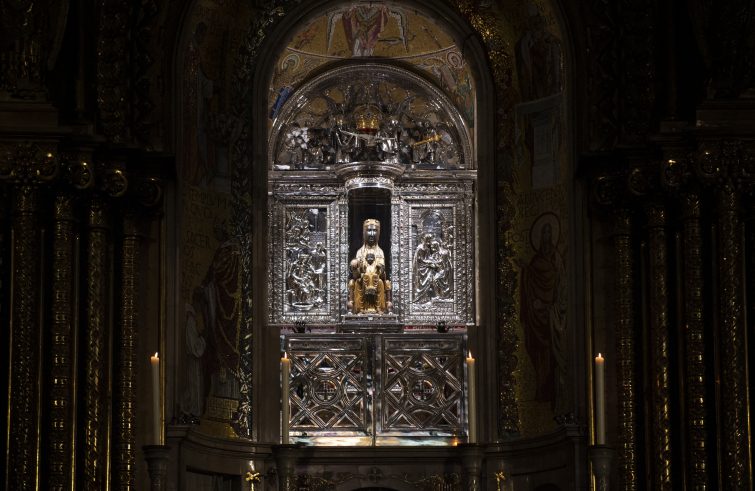
Today marks the conclusion of the Ignatian Year proclaimed on May 20, 2021 to celebrate the 500th anniversary of Ignatius of Loyola’s conversion. The fact that his birth, or the anniversary of some specific event, was decided not to be celebrated as such, but rather his inner process of conversion, which constituted his true and actual birth and, at the same time, the dawn of a comprehensive rebirth for the Church and the world of that time, is in fact revealing.
Clearly, the inner dynamic of his conversion could in no way have been recorded by anyone, as it is empirically unattainable, and therefore that process is anchored to the period when Ignatius lived in Manresa and was transformed in the incubator of La Cueva, depositing not only the old man, but also the first superficial and transient elements of the new man, until, through infused contemplation, he could see God in all things, and all things in God.
Much could be said about the period Ignatius spent in Manresa – and indeed much has been said and written!
Yet today, maybe because it is where I am at the moment, I would like to talk about yet another very important place for Saint Ignatius, one that preceded and complemented the events of Manresa: the Benedictine monastery of Montserrat, Shrine of one of the most famous and most worshipped ‘Black Madonnas’.
I look around, and as I gaze at the rounded tips of the surrounding mountain peaks, like fingers enclosing the holy site, I remember that it was here that Ignatius received two gifts crucial for his conversion.
First of all, at Montserrat he made a general confession: “the confession, took three days to write down. He also entrusted his confessor with the task of giving away his mule and hung up his sword and dagger at the shrine, near the altar of the blessed Virgin” (Autobiography, 17). He thus renounced his former life through a symbolic gesture, namely by giving up his weapons, a symbol of his pretensions, vanities and fears, and his brother’s mule, expressing renunciation of all comforts, shortcuts or reliance on his ancestry.
From the monks, Iñigo learns not only to confess (he prepares his confession on a text by Abbot Cisneiros), but also to pray fruitfully, which is Montserrat’s second gift to our beloved Basque pilgrim.
From the monks, Iñigo learns to immerse himself in Scripture, ruminating on it so as to draw the contemplative essence that nourishes the soul: “For it is not knowing much, but realising and relishing things interiorly, that contents and satisfies the soul.” (Spiritual Exercises, 2). That contemplative proclivity was surely inborn, owing to the pictorial and iconographic richness of the churches of his day, with their great and sumptuous retables that illustrated the mysteries of the life of Christ and the saints behind the altars, that is made sober, essential, Scriptural, via Benedictine discipline. The soul must learn to compose the places and paint its inner images, guided by the Spirit.
Soul-searching and contemplative prayer: St Ignatius, and the Society he founded, whereby he renewed the Church and changed the face of Europe, raising it from the Middle Ages to modernity, drew upon the monastic tradition as source of spiritual life. It can be said that St Benedict, yet again, this time via St Ignatius, saved the Church and Europe from barbarism, as he did at the time of the first monastic foundations, treasure troves of creativity and breeding ground for humanising culture, in addition to faith.
And we too cannot fail to recognise, today, along the path traced by Ignatius and inaugurated by Benedict, the course that must be taken to save ourselves from barbarism yet again. The core principles of the early monastic tradition, namely, living communion and sharing, cherishing and transmitting the most important fruits of human culture, being attuned to the pace of time and nature for an integral ecology practised in daily life, and, above all, giving centrality to inner life, constitute the most powerful antidote to an overall loss of hope and fragmentation that humankind is facing today, battered by pandemics, war, natural disasters and economic crises.
Fifteen hundred years ago, devastated by barbarian invasions, Europe rose from the ashes thanks to monasteries. Five hundred years ago, an ambitious Basque courtier, wounded by a cannonball that shattered his leg, emerged renewed by converting to religious life thanks to the Benedictine spirituality of Montserrat. Even today, devastated by countless external and internal crises, humanity can find in monastic wisdom a refuge and a springboard for rebirth.
Will we humbly accept to remain silent and to listen?










